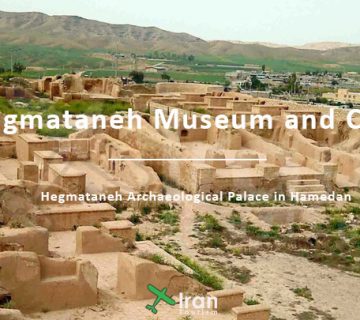Gorgan City also spelled as Gorgān, is a historic city located in northern Iran, the capital of the Golestan Province. Like all the other Caspian shore provinces, This charming city is nestled in a picturesque region between the Caspian Sea to the west and the Golestan Forests to the east, making it an excellent destination for nature enthusiasts and history buffs alike.
Gorgan city is surrounded by jungles and mountain peaks. But still, Gorgan history is interesting enough to keep you occupied with visiting the museums and palaces and especially the Gorgan Great Wall, which is a must-see in Gorgan city. The weather here is mostly cool and humid during winters and warm during summers. The average temperature here is 19 degrees Celsius.
So, follow the Iran Travel Guide Center article to learn more about Gorgan City and Gorgan’s History:
Historical Significance of Gorgan City
Gorgan boasts a rich historical heritage, with origins dating back to ancient times. It was once a major center along the Silk Road and served as the capital of the Parthian Empire. As such, the city is dotted with archaeological sites and historical remnants that narrate its illustrious past.
Gorgan’s history is deeply intertwined with the broader history of Iran, with archaeological evidence suggesting that the region has been inhabited for thousands of years. Here’s a more detailed look at the historical significance of Gorgan:
Ancient Roots: Gorgan’s history dates back to the ancient world. It was known as Hyrcania in antiquity and was part of the Achaemenid Persian Empire. During this time, it served as an important center for trade and commerce, thanks to its location along the Silk Road, which connected the East to the West.
Parthian Capital: Gorgan gained prominence during the Parthian Empire (circa 247 BCE to 224 CE). It was chosen as the capital of the Parthian Empire by Mithridates I, cementing its status as a significant political and cultural hub. The Parthian Empire, at its zenith, rivaled the Roman Empire and greatly influenced the art, culture, and architecture of Gorgan.
Gorgan Wall: One of the most iconic historical features of Gorgan is the Gorgan Wall, also known as the Great Wall of Gorgan. This massive defensive fortification stretched for over 200 kilometers and protected the eastern borders of the Parthian Empire. It was constructed primarily during the reign of Emperor Valerian in the 3rd century CE. The wall consisted of ramparts, watchtowers, and forts, and it served as a testament to the region’s strategic importance.
Medieval Period: Gorgan continued to play a crucial role in subsequent empires, including the Sassanian Empire and the Islamic Caliphates. The city served as a center for scholarship and trade during the Islamic Golden Age. It was also a key point along the medieval Silk Road.
Modern Era: In the modern era, Gorgan has evolved into a vibrant city while preserving its historical legacy. Many historical sites and ruins, such as the Gorgan Wall, have been studied by archaeologists and are of great interest to historians and tourists alike.
Today, Gorgan stands as a bridge between its storied past and a promising future. Its historical significance, combined with its natural beauty and modern amenities, makes it a captivating destination for travelers eager to explore Iran’s rich heritage.
Travel to Gorgan City
Airplane: Gorgan Airport is located 5 km outside of the city. It is accessible only via Taxicabs. There are daily flights available to Isfahan City, Mashhad City, Tehran City, and…
Train: Gorgan city train station is also located north of the city. It is accessible via City buses; you need to take the Havaee Square stop. There are daily trains available to Tehran City.
Bus: Gorgan Bus Terminal is located just across from the Train Station. It is accessible via city buses. You need to take the Havaee Square stop.
Gorgan City Hotels and Accommodations
Azin Hotel
A mid-range option located 1 km outside of the city.
Address: Asia Boulevard
Phone number: +98 17 3242 3004
Nahar Khuran Hotel
It is located in the middle of Nahar Khuran Jungle Park. With a great view of the park.
Address: km 5 of Nahar Khuran Boulevard
Phone number: +98 17 3254 0034
Shahab Hotel
Another hotel is located in Nahar Khuran Jungle Park.
Address: Nahar Khuran boulevard
Phone number: +98 17 3254 4419
Gorgan City Tourist Attractions
Gorgan is surrounded by amazing natural sights. The Caspian shores west of the city and Ashuradeh protected Island attract many domestic and international tourists here every year.
Nahar Khuran Jungle is south of the city, Abr Jungle which gets covered with mist and clouds regularly, and Tuskestan Jungle are a couple of amazing forests available close to Gorgan City.
The history of Gorgan is also rich enough to keep you preoccupied for a couple of days. Gorgan Museum, Gorgan Jameh mosque, and numerous Historical houses and palaces can give you an overall understanding of Gorgan’s History.
Last but not least, The Gorgan Great Wall, the third-largest wall ever built in history and the oldest of them all is located here. It is the most iconic representative of Gorgan’s History. The ruins of the Gorgan Great Wall stretch from the Caspian Sea to Turkmenistan. Now parts of it are open for visitors to see and enjoy.
What to eat in Gorgan?
Goje Ash, Khurushte Sak, Mash polo, and Heli Ash are some of the most famous Iranian cuisine dishes available in Gorgan. Tele Ka Restaurant in Ziarat Road outside of the city is a place where you can try these local dishes.

Nan Khormaee, Nan Zangefili, and Halva Omaj are some of the local Iranian desserts available in Gorgan City.
Gorgan Souvenirs
Turkmen style Carpet is different from Tabriz city and Isfahan Style Carpet and is only available in this region and exclusive to Gorgan History. Silk knitting and handmade jewels are some of the other local souvenirs available in this city.




No comment